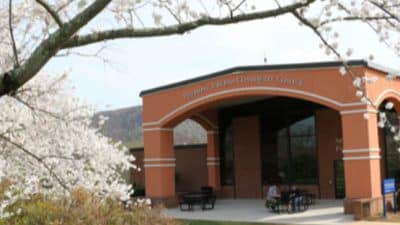Story by Chris Graham
[email protected]
The federal government is leaner and meaner – OK, so that’s me trying to be funny there, I admit it.
But when it comes to funding for the national park system, times are lean and rather mean when it comes to items in the budget that are of an infrastructure nature.
Enter the Shenandoah National Park Trust, which works with the local national park and the National Park Service to account for issues related to the preservation of the park’s past and the enrichment of its future.
“The national parks in general at this point are underfunded – partly because it has become so very, very expensive to run national parks. It’s a system that is a legacy from our forefathers, and it is just one of the central things in America that visitors love and that Americans love and use,” said Cathy McNair, the executive director of the Shenandoah National Park Trust, in an interview for today’s “Augusta Free Press Show.”
Shenandoah National Park is today and has been for years operating under the pressure of having almost all of its budget go to fixed costs – “which means that they have not had the extra money in their budget to do things that would not just be icing on the cake, but projects that are really important to enhancing the experience of today’s visitors,” McNair said.
The trust focuses on providing monies for two different areas.
“One is preserving and protecting the park, and in some cases restoring features for the future, so that the park will be essentially the same for future generations. And then secondly, but not less importantly, working on projects that enhance the experiences for today’s visitors – so those would be things like education programs and perhaps improving facilities and in some cases building new facilities, that kind of thing,” McNair said.
Two projects that currently have the attention of the trust involve the Mount Vernon Furnace and Old Rag Mountain. At the Mount Vernon Furnace, which dates back to 1830, the trust has provided $30,000 in grant funding for the staff of the National Park Service Historic Preservation Training Center to conduct field investigations on the structure with subsequent preparation of a field report, stabilization plan and a detailed budget to conduct work toward the preservation and utilization of the furnace.
“The furnace itself, the structure of it, is deteriorating – primarily just with time and the elements, and perhaps with, you know, people climbing on it and things like that, which they shouldn’t do,” McNair said.
“What we are doing now is doing an initial plan to figure out what will actually be entailed in stabilizing the structure, and making sure that we meet all of the environmental requirements and that kind of thing. And then eventually the structure will be stabilized, and it will be able to be used as an educational site within the park, and also will be able to be enjoyed by future generations, as opposed to just crumbling into nothing,” McNair said.
The project at Old Rag Mountain involves a $10,000 grant that will be used to place a first-response rescue cache near a shelter near the summit of the popular peak.
“Old Rag Mountain is climbed by about 50,000 people every year. It is climbed by folks who have all levels of physical fitness and outdoor knowledge. And therefore we do get a fair number of injuries, normally near the summit of Old Rag. It’s what’s called a rock-scramble experience – and a lot of people aren’t used to doing that, so there’s any variety of problems for people, anywhere from getting lost to suffering heart attacks to having physical injuries from falls,” McNair said
“It’s very necessary to rescue people – and part of the challenge is that Old Rag Mountain is in part of the federally designated wilderness, and there are really no structures up there that can house an emergency cache such as this,” McNair said.
“This cache will be located as close as possible to the summit of Old Rag – about a half-mile away, in an area that is not federally-designated wilderness, where there is already a small shelter. And what this will allow is one or two emergency responders to immediately help the individual who is in trouble probably also while summoning other help if it’s a serious-enough emergency,” McNair said.
Chris Graham is the executive editor of The Augusta Free Press.










